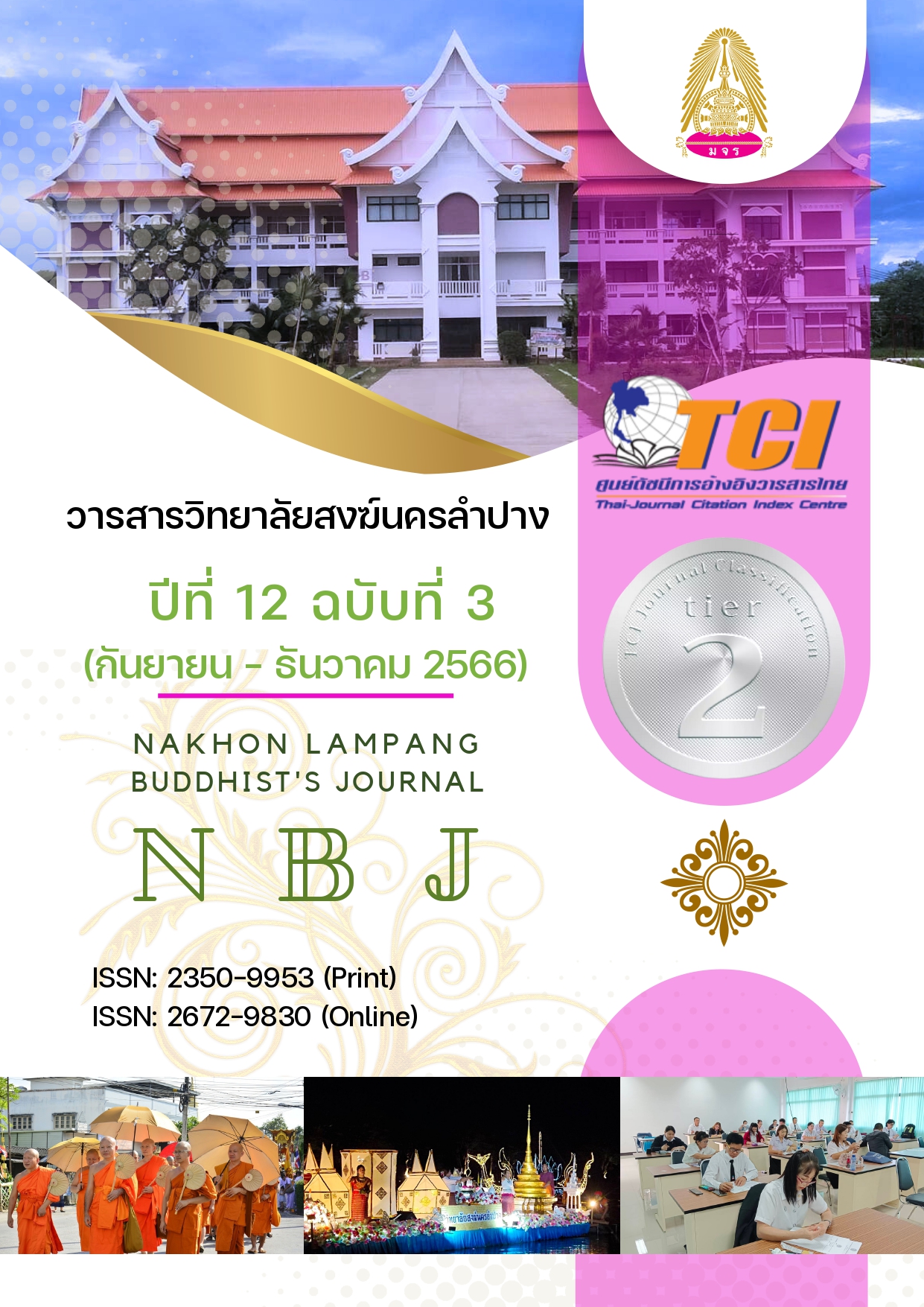THE RELATIONSHIP BETWEEN LEARNING METHODS AND LEARNING STRATEGIES OF HIGH SCHOOL STUDENTS IN PRIVATE SCHOOL, PATHUMTHANI PROVINCE
Main Article Content
Abstract
In this survey-based study, high school students who attended private schools in the province of Pathumthani were asked to examine the relationship between their learning techniques and methods for learning the English language. This study's sample group was made up of high school students enrolled in all English classes in the first semester of 2023 at private high schools in the province of Pathumthani that offer education at the high school level. From five private educational institutes, there were 270 individuals in all. An individual item's discrimination score ranged from.22 to.90 on a five-rating scale questionnaire, while the questionnaire as a whole had a reliability score between.75 and.92. The statistical analysis comprised mean (), standard deviation (SD), Pearson’s correlation coefficient (Pearson correlation).
The findings were as follows: 1) The individual and auditory learning approaches were very compatible with English learning approaches. The remaining four learning strategies were deemed to have no statistical relevance because of their low average values. Students are thought to use it infrequently as a learning strategy. 2) The study participants' preferred methods for learning English are cognitive strategies, which are followed by the metaphysical approach. The order in which memory, compensation, and social techniques are employed is evident, with the emotive kind being the least utilized. 3) Regarding the connection between learning strategies and methods, it was discovered that learners who were visual could effectively regulate their attitudes and feelings while acquiring English. It implies that students could regulate their anxiety levels and exercise self-motivation. For example, those who learn best by auditory means would be able to understand information and apply reasoning to analyze it. When the metacognition method was combined with other strategies that were applied carelessly and arbitrarily, the students also experienced difficulties.
Article Details

This work is licensed under a Creative Commons Attribution-NonCommercial-NoDerivatives 4.0 International License.
References
Grainger, P. (2008). Language-learning strategies for learners of Japanese: investigating ethnicity. (Research Report). Foreign Language Annals: ACTFL Language.
Green, M. & Oxford, L. (1995). A closer look at learning strategies, L2 achievement, and gender. (Research Report). TESOL Quarterly: TESOL International Association.
Jindaprasert, A. (1997). Development of foreign language learning strategies. (Master’s Thesis). Khon Kaen University. Khon Kaen.
Mulalic, A., Mohd Shah, P. & Ahmad, F. (2009). Perceptual Learning styles of ESL students.
Retrieved October 6, 2023, from https://www.researchgate.net/publication/285976746_Perceptual_learning_styles_of_ESL_students.
Munkham, S. (2012). Learning management methods: to develop thinking processes. Bangkok: Print.
Oxford, R. & Crookall, D. (1990). Research on six situational language learning strategies: Methods, findings, and instructional issues. Modern Language Journal, 22 (3), 73-76.
Oxford, R. L. (1990). Language learning strategies: what every teacher should know. New York: Newbury House Publishers.
Peacock, M. (2001). Match of Mismatch: Learning Style and Teaching Styles in EFL. International Journal of Applied Linguistics, 11(1). 38 - 58.
Prawanphruek, W. (1998). “Classroom research and guidelines for developing teaching and learning” Handbook for learning development. Bangkok: Department of Academic Affairs, Ministry of Education.
Pringprom, P. (2008). A study of the use of English learning strategies for first- and second-year students at Bangkok University. (Master’s Thesis). Bangkok University. Bangkok.
Reid, J. (1987). The learning style preferences of ESL students. Boston: Heinle & Heinle.
Reid, J. (1998). Understanding learning styles in the second language classroom. USA: Prentice Hall Regents.
Shih, C., & Gamon, J. (2003). Student learning styles, motivation, learning strategies, and achievement in web-based courses. Retrieved on October 23, 2023, from http://iccel.wfu.edu/publications/ journals/jcel/ jcel1990305/ccshih.htm.
Siladet, C. (2002). Mapping manual that focuses on learners. Bangkok: Mac.
Soosongdee, Y. (2023). English Language Learning Management in the 21th Century. Retrieved October 6, 2023, from
https://so03.tci-thaijo.org/index.php/jhssrru/article/view/269417.
Tabanlioglu, S. (2003). The Relationship between Learning Styles and Language Learning Strategies of Pre-intermediate EAP Students. (Master’s Theses). Middle East Technical University. Turkey.
Thapphun, A. (2011). A study of the use of English learning strategies of first year students at the Thai-Nippon Institute of Technology 2011. (Master’s Thesis). Chulalongkorn University. Bangkok.
Wasanasomsit, P. (1999). A study of the learning styles of first year students in English as a foreign language. (Master’s Thesis). Chulalongkorn University. Bangkok.
Wintergerst, A. (1998). Conceptualizing Learning Style Modalities for ESL/EFL Students System. Retrieved on October 20, 2023 from https://www.researchgate.net/publication/222115577_Conceptualizing_learning_style_modalities_for_ESLEFL_students.
Wongphankamon, A. (2005). English reading strategies of Mathayom 6 students with high and low English proficiency levels In the science and art lesson plan of Assumption College Thonburi, academic year 2004-2005. (Master’s Thesis). Bangkok University. Bangkok.
Yamane, T. (1973). Statistics: an introductory analysis. New York: Harper & Row.
Yongkamon, S. (2011). Overview and synthesis of research related to international English language teaching 1982-1997. (Master’s Thesis). Chulalongkorn University. Bangkok.
